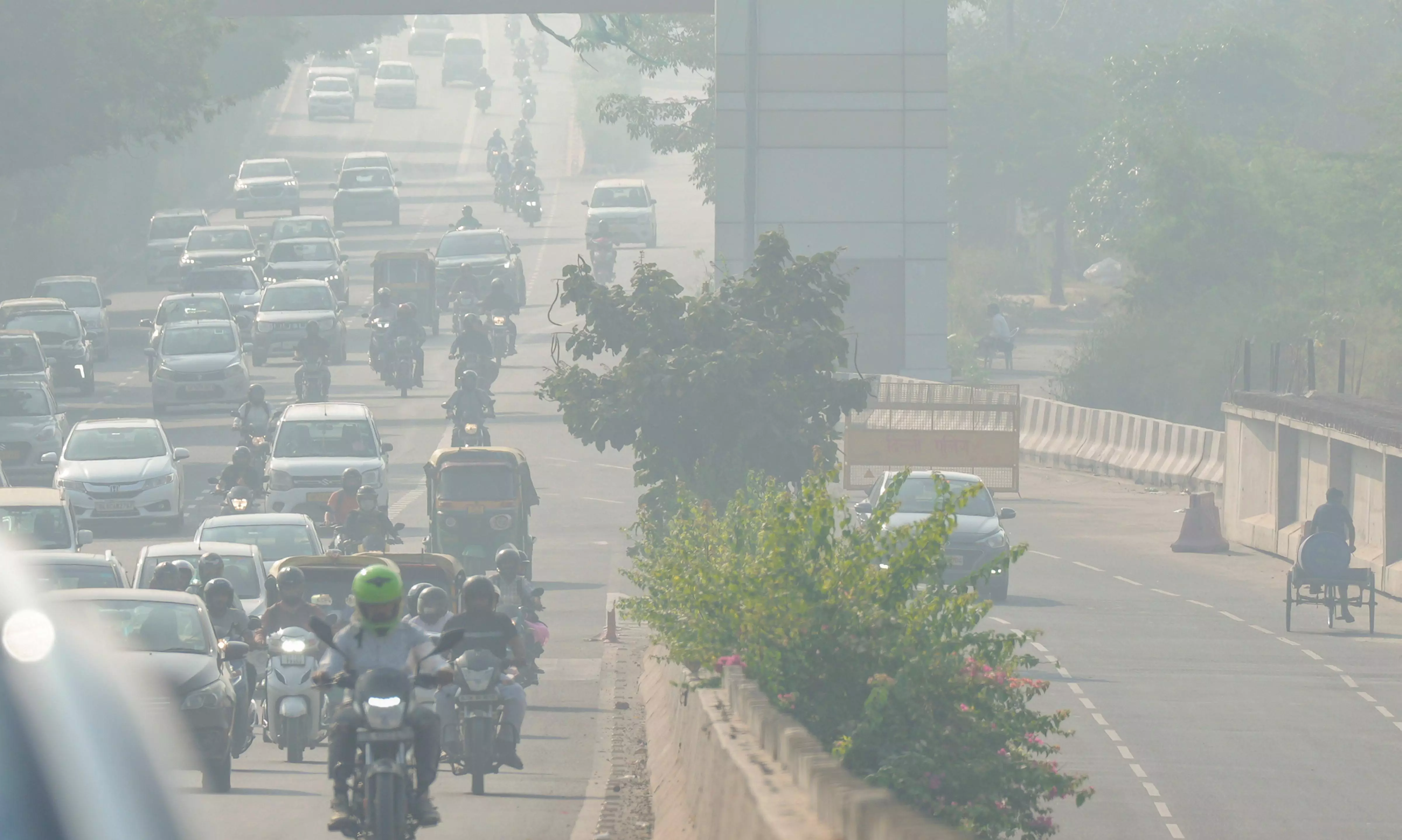
Diwali effect: Delhi's air quality deteriorates to 'very poor'

New Delhi, Oct 31 (PTI) Delhi's air quality continued to deteriorate, remaining in the "very poor" category on Diwali, with levels expected to worsen to the "severe" category due to bursting of firecrackers at night.
Delhiites woke up Thursday to a sky shrouded in a thick layer of smog. The air in Anand Vihar, a major terminus, was extremely polluted with the AQI in the "severe" category.
The city's 24-hour average Air Quality Index (AQI) was recorded at 328 at 4 pm, up from 307 on Wednesday when the city celebrated Chhoti Diwali.
In 2023, Delhi residents enjoyed clearer skies and abundant sunshine on Diwali, with an AQI of 218, compared to 312 in 2022, 382 in 2021, 414 in 2020, 337 in 2019, 281 in 2018, 319 in 2017, and 431 in 2016, according to the Central Pollution Control Board data.
Last year, a decrease in stubble-burning incidents and rain before Diwali, along with favourable meteorological conditions, prevented the national capital from turning into a gas chamber after the festival.
The pollutant PM2.5 level was recorded at 145 micrograms per cubic metre at 3 pm, according to the data.
PM2.5 is fine particulate matter capable of penetrating deep into the respiratory system and triggering health problems.
In accordance with the practice of the past four years, Delhi has announced a comprehensive ban on the manufacture, storage, sale and the use of firecrackers in the city.
In Delhi's neighbouring areas like Ghaziabad, Gurugram, Greater Noida, and Noida, the air quality was slightly better and recorded in the "poor" category.
In contrast, Faridabad's air quality was "moderate" with a reading of 181, according to the CPCB data.
Thirty-eight monitoring stations showed that the air was in the "very poor" category across the city.
An AQI between zero and 50 is considered 'good', 51 and 100 'satisfactory', 101 and 200 'moderate', 201 and 300 'poor', 301 and 400 'very poor', 401 and 450 'severe' and above 450 'severe plus'.
On Diwali eve, Delhi Environment Minister Gopal Rai announced that 377 teams had been formed to enforce the ban on firecrackers across the national capital.
He said that authorities are in touch with the resident welfare associations, market associations, and social organisations to spread awareness.
Police teams have been formed to ensure that firecrackers are not burst.
"Legal action will be taken against those found bursting crackers. They may also be booked under the relevant sections of the BNS (Bharatiya Nyaya Sanhita) for violating government orders," an officer said.
Unfavourable meteorological conditions, combined with vehicular emissions, paddy-straw burning, firecrackers and other local pollution sources, contribute to hazardous air quality levels in the Delhi-NCR during winters.
According to a Delhi Pollution Control Committee analysis, the city experiences peak pollution from November 1 to 15, when the number of stubble-burning incidents in Punjab and Haryana increases. PTI

